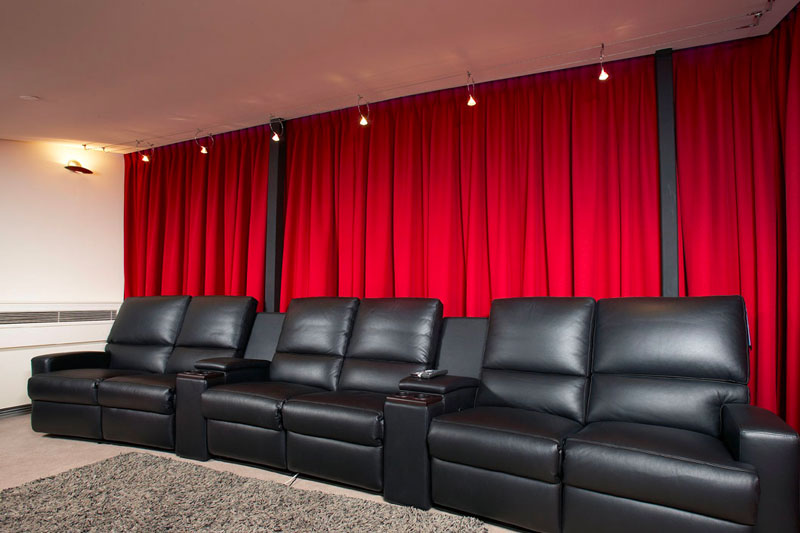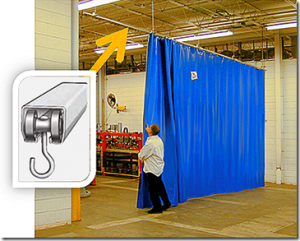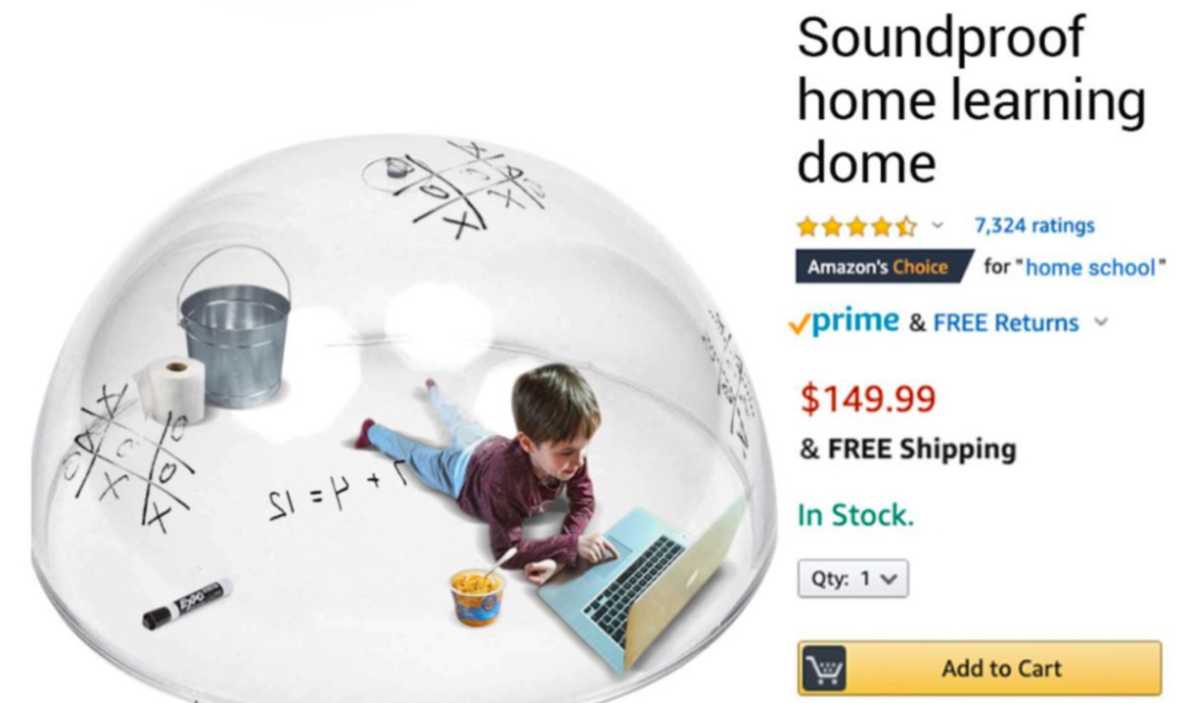Noise Reducing Curtains: Comprehensive Guide

Scientific View: What Are Noise Reducing Curtains?
How Does Sound Get Inside Your House?
How Does a Noise-Reducing Curtain Differ from a Regular Curtain?
| 1. Soundproof curtains are typically much larger than regular curtains | This type of curtain is huge, with a drop length that can almost meet the ground and a depth that is much greater than the width of the walls. This helps them to shield as much of the space outside your window as possible, which is where a large percentage of sounds enter your home. This will have a significant difference to regulate the noise inside. Even a little space near the window that is left open lets a lot of sound in. According to researchers, even a 1 percent exposed area will allow up to 50% of the sound to pass through. |
| 2. The soundproof curtains are very dense and thick | The heavier and denser a textile is, similar to conventional quilting, the more energy a sound wave will siphon from it, lowering the volume until it meets your ears. Soundproof curtains are typically made of vinyl that has been compressed into dense fabrics such as silk, allowing for soundproofing. |
| 3. Soundproof curtains are rugged, porous, and have a lot of beading | This component makes a big difference when it comes to muffling a sound. Sounds, as previously said, are a wave that flows across the air. When they collide with an object, they bounce off of it, and, the flatter the floor, the more coherent the sound wave that returns. That’s why the strongest echoes are found in areas where sound waves are not really reflected. Deep pleats and a rugged wall, on the other hand, break up the sound wave, capturing some of the energy and scattering the others in both directions, resulting in much softer vibrations that gradually reach the ear. |
Do Noise-Reducing Curtains Work?
Video Review: Do Soundproof Curtains Actually Work? I’ll Tell You!
Advantages and Disadvantages
Noise-Reducing Curtains Types
1. Audio Insulation Sheets  |
Although audio insulation sheets are not actually curtains, they can be hanged to serve as such. Grommets are commonly used on audio insulation sheets to allow them to be hung from a curtain rod. Since they are made up of several layers of very thick fiber, audio insulation sheets are able to prevent more noise than insulation sheets and industrial blankets. Because of the many layers, they often double as a blackout curtain. Audio insulation sheets, on the other hand, are more costly due to the amount of fabric used to produce them. |
2. Industrial Blanket  |
Typically, during a moving process, industrial blankets are mainly used to cover appliances, furniture, and other delicate objects. Industrial blankets are produced by dense, padded cloth and they are used for this purpose, allowing them to act as soundproof curtains. While they are not curtains per se, if you can find a place to mount them in your window, they can help to muffle outside noise. Grommets are used on some commercial blankets to enable them to hang. If you want to decrease outside noise in your indoor environment, industrial blankets are one of the most cost-effective choices. |
3. Insulation Curtains  |
Insulation curtains have a close appearance to normal window curtains in your house. Insulation curtains, on the other hand, are made of thicker materials to block any outside sound. Since the thicker layer that protects the room from noise also serves to suppress glare, insulation curtains are often used as blackout curtains. Insulation curtains will also help you save money on your energy bills. The same dense material that absorbs noise also acts as insulation, keeping your home warm or cold and preventing air from entering or leaving through open spaces. |
Where to Buy Noise-Reducing Curtains?
1. Ikea (official website)
2. Best Buy (official website)
3. Amazon (official website)
DIY Noise Reducing Curtains
| 1. Measure your window | Measure the height and width of the windows you like sound-absorbing curtains to protect. You’ll also want curtains to cover the whole window space for better sound insulation. Allow for the curtains to hit the ground or even attach an inch or two whether you’re shielding floor-to-ceiling windows or a sliding glass panel. |
| 2. Build up the layers | Place the wadding between the two parts of the meter cloth, leaving a 1cm distance between the wedding’s side and the meter fabric’s edge on both sides. |
| 3. Fold and secure with pins | To make a hem, roll the sides of the meter cloth inwards and pin them in position. |
| 4. Sew the border in place | Remove the pins as you sew the two sides along with the wadding within. Attach the hems with sticky hemming tape instead of the stitching if you want a no-stitch alternative. Tuck it under the hem’s edge and seal the tape with an iron, as directed on the package. |
| 5. Make a lattice pattern | To keep the wadding evenly spread, stitch a lattice pattern into the curtain. Start by measuring and drawing out fair squares with a tape measure and the dressmaker’s chalk. They come in a range of styles, based on the height of the curtain. Make sure they are all the same size. |
| 6. Place the lattice in place and sew it in position | Sew the lattice pattern onto the curtain using a needle and thread. To secure the wadding in place, use double lines. Once you’re done, rub away the chalk. |
| 7. Install the eyelets | Place a pair of eyelets in the upper corner of your curtain so you can conveniently hang it from wall hooks. Make a spherical shape the same size as the eyelet first. The eyelet could then be pushed into position. It has to be a tight fit. |
Video Review: DIY ACOUSTIC CURTAIN
What to Look for When Buying a Noise-Reducing Curtain?
| 1. Size | Before you go out and buy curtains, you can figure out what size you like. Measure the length, height, and width of the area where the curtains would be hung using a tape measure. It’s important to note that soundproof curtains should be a few inches wider and longer than the door or window. The larger the windows, the better at soundproofing they would be. |
| 2. Density | Bear in mind the thicker curtains capture and dampen sound more easily than thinner curtains. Consider doubling or tripling the layers of the curtains you have in the room for an added noise reduction. |
| 3. Materials | The fabrics used in the curtains you buy will differ. Look for polyester, suede, or silk curtains – something with additional fabrics – when looking for the right soundproofing fabrics (more about soundproofing fabrics on bettersoundproofing.com). Thermal insulation curtains, such as thermal weave and thermal layer, are also recommended because they assist with sound absorption and close all air holes. |
| 4. Curtain Rails | It could be worth repairing the old rails if you’re concerned about soundproofing. A heavy-duty collection of ceiling-mounted hooks will provide you with the full floor-to-ceiling coverage you need, and they’ll be extremely sturdy if installed properly. |
| 5. Layers | Finally, search for a curtain that has a variety of layers. More layers imply increased weight, thickness, and sound absorption. There’s even a higher price tag. It is, however, worth it. |
FAQ
Do blackout curtains keep noise out?
Blackout curtains are sometimes sold as “soundproof” or “sound-reducing,” having them seem ideal for anyone who likes their space to be pitch black but still being soundproof (read about blackout curtains on infobloom.com). Soundproof curtains designed primarily to block noise are also more effective than blackout curtains at mitigating noise. Blackout curtains are frequently not specifically built for soundproofing, but their thickness still makes them good for muffling sounds.
How can I soundproof a room cheaply?
Add window drapes and curtains, curtains not only provide a perfect visual shield toward nosy neighbors, but they also provide sound dampening. Hang acoustic panels, place area rugs, and add upholstered furniture, these allow the room to be more compacted. As a result, the sound can be absorbed effectively, lessening or dampening noise in the process.
Can a room be completely soundproof?
Yes, a room may be fully soundproofed, but this typically necessitates the use of hung walls as well as suspended floors and ceilings. All of this produces dead air in the room, which prevents sound waves from entering or exiting.
Which is better for reducing noise room dividers or noise reducing curtains?
Noise-canceling curtain dividers are extremely effective as curtains (more info about noise-canceling curtain dividers on soundproofliving.com). Choose dividers with the most fibers in them when it comes to the material. Suede or silk curtains are excellent noise absorbers. Most notably, extra divider liners provide an extra layer over which the sound will move.


